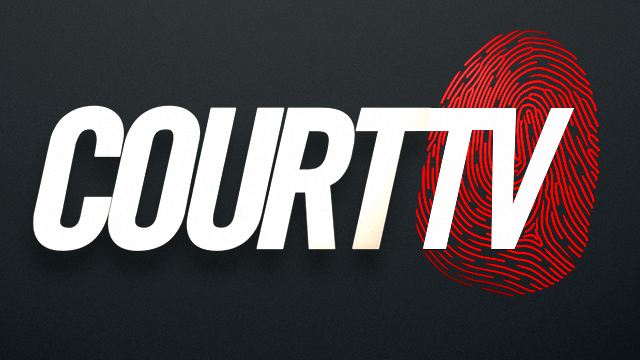Hire a Prison Consultant with
EXPERIENCE
With Your Freedom & Reputation on the Line You Need the Best Consulting Team!
OVER 20 YEARS EXPERIENCE
Larry Levine,
America’s First Prison Consultant


Hi, it’s Larry Levine. Despite what you may have read elsewhere, I’m gonna lay out the real steps in the Criminal Justice process in sequential order. Be sure to follow the links throughout for detailed Information as to why and when they occur.
The Crime Itself
First of all none of this would have ever happened if you had not done something to break the law or encouraged others to do so. It could be fraud with a large dollar loss, or possibly a drugs or weapons case. Regardless of how or why a crime has been committed. And if you did it with others the Feds are sure to call it a conspiracy possibly with people they don’t even know.
Who Commits Crimes
People of all ages, men and women commit white collar crimes for various reasons. For information on who statistically commits white collar crimes and why they do it be sure to visit the links below.
- Who Commits Fraud Crimes
- Who Commits White Collar Crimes
- Why People Commit Fraud
- White Collar Crime Descriptions
The Criminal Investigation
In most cases it kicks off with a hot tip by a rat, or some shady moves that catch the Feds’ eagle eyes. That’s when the gears start grinding. We’re talking surveillance, wiretaps, and undercover Federal Agents slipping into the mix, all to gather the dirt on whoever’s stepping out of line. These agents are on it 24/7, building a case that’s rock solid to be presented to a Grand Jury.
The Federal Grand Jury
A federal grand jury is where the big decisions are made, the kind that can turn someone’s life upside down before they even know what hit ‘em. Somewhere in a federal courthouse, there’s a room that’s buzzing with the quiet intensity of 16 to 23 civilians. Prosecutors present evidence to grand jurors of crimes to influence the fate of potential Indictments.
Federal Criminal Complaints and Arrest Warrants
So now that the Feds have determined a crime has taken place and determined you may be a flight risk or threat to others a decision is made to have you arrested and placed in custody. A Federal Agent will swear out an affidavit for a criminal complaint along with the Federal prosecutor from the DOJ to a Federal Magistrate Judge about their investigation and what you have been alleged to have done and the judge will sign out an arrest warrant.
Executing a Federal Arrest Warrants
In the dim, early hours, while most folks are still lost in their dreams, Federal agents are gearing up for what you’d call a calculated blitz. Picture this: a group of agents, all huddled in some nondescript building wearing black tactical gear, will pore over the details of a federal arrest warrant issued by a no-nonsense judge authorizing them to bust through someone’s door.
What is Done in a Search Warrant
When the federal agents cross that threshold with a search warrant in hand, is serious business. The lead agent usually coordinates the operation right from the entryway, dictating which teams hit which parts of the house. This isn’t random; it’s all been pre-planned based on intel they’ve already gathered about the layout and potential hiding spots for whatever they’re hunting—be it illegal weapons, evidence of white-collar crimes, or contraband.
Federal Arrests
Alright, let’s paint the picture here: it’s the crack of dawn, maybe you’re still in bed or just about to sip that first hopeful cup of coffee. Suddenly, BAM! Your door flies off its hinges and in come the feds—decked out in tactical gear, moving fast, and ready to turn your place upside down. You and whoever is there will be handcuffed and made to sit on a chair, or possibly the floor and wait while they tear up your home looking for evidence. Soon you’ll on your way to booking and custody.
Post Arrest Interrogation
Alright, let’s break it down. So there you are, maybe still reeling from the shock of being arrested, and one of these agents starts reciting the familiar lines: “You have the right to remain silent. Anything you say can and will be used against you in a court of law. You have the right to an attorney…” You’ve heard it on TV a million times, but suddenly, it’s real, and it’s directed right at you. What should you do? Keep your trap shut and wait for your lawyer.
Booking Process
First thing’s first, the perp is now in federal custody and headed straight to the nearest federal holding facility. Once they hit the federal building, it’s go-time. Our suspect gets the full intake experience. They’ll take his picture, his fingerprints, and strip away any personal belongings like they’re peeling back the layers of his past life. He’s not just John Doe; he’s an inmate now, an official guest of the federal government.
Federal Detention Center
This is where the Feds park folks who are waiting for their Arraignment, their first appearance in Court and can’t make Bond. It’s a place that’s high security, stark hallways, and that unmistakable scent of industrial cleaner mixed with a heavy dose of tension. Your first night in a federal detention center is something you’re not likely to forget. First off, when you’re processed, they strip away your street clothes, hand you the standard issue jumpsuit. You’re lying there on a mattress that’s too thin, in a room that’s too cold, with sheets that feel like sandpaper.
First Courtroom Appearance
Federal courtrooms are typically spacious and imposing, designed to reflect the serious nature of the business conducted within. High ceilings and large, often arched windows give it an air of authority and solemnity, allowing natural light to filter in and illuminate the proceedings. The centerpiece is the judge’s bench, an elevated, imposing desk that sits at the front of the room, usually crafted from rich, dark wood. Once you step through those courtroom doors, and right away, there’s a vibe of solemnity and seriousness.
Meeting your Lawyer
Meeting your lawyer for the first time after the feds have come knocking isn’t like grabbing coffee with a friend; this is a crucial sit-down that could seriously shape your future. Maybe you’re in a small, stark room somewhere inside the courthouse or visiting area of the detention center. Your lawyer, they’re all business, but there’s a hint of reassurance in their demeanor. They know the ropes, and right now, they’re your lifeline. They’ll start off by getting the basics down, asking you to walk them through what happened from your arrest to now.
Federal Arraignment
You find yourself handcuffed and leg cuffed and led into the courtroom by a US Marshal and the Court Clerk will call out your name and your case will be called. An arraignment is your initial appearance in court and happens within 48 hours of arrest. Arraignment proceedings usually take place in front of a Magistrate Judge opposed to a District Judge. If you don’t have a Private Lawyer a Public Defender will be appointed for you until you can obtain paid counsel. This is the moment where the charges against you are laid out.
Initial Not Guilty Plea
When you’re up there at arraignment, fresh on the heels of getting arrested, you’ve probably got more questions than answers. You might not even fully understand the depth of the evidence against you or the full ramifications of the charges you’re facing. So, taking a stance of “not guilty” gives you and your lawyer the breathing room to dig into the case, to start pulling apart the prosecution’s claims and to see just how solid their case really is.
Meeting Pre Trial Services
When you first meet up with a U.S. Pretrial Services Officer after your arraignment. This isn’t just some casual sit-down; it’s a crucial part of figuring out whether you’re hitting the streets or heading back to a cell while you wait for your trial. They’re not just there to chat; they’ve got a job to do, which is to size you up and assess how much of a risk you are if they let you out on bail.
Bail Hearing & Making Bond
Alright, let’s dive into the high-octane world of a bail hearing, where the stakes are sky-high and every player is on their A-game. This isn’t just another day in court—it’s the moment where our freshly cuffed perp gets to plead his case for a taste of freedom, albeit possibly temporary, before trial. Meanwhile, pretrial services are lurking in the background, ready to weigh in with their two cents on whether this guy’s a flight risk or a community threat.
Federal Indictment
Alright, strap in and let’s break down what a federal indictment really is—it’s not just a stack of papers, it’s the federal hammer coming down hard. This is the government’s heavyweight punch, their way of saying, “Guess what? You’re officially in the hot seat.”
Think of a federal indictment as the main event after the grand jury nods approval. It’s the prosecutorial spotlight turning full beam on someone, with all the drama of a finale in a blockbuster movie. This document? It’s like dropping a bomb right in the middle of someone’s life.
Discovery
First up, the prosecution starts the show. They’ve got to hand over everything they plan to use in court to prove their case. We’re talking police reports, witness statements, videos, emails—basically the whole kitchen sink of evidence that they’ve been collecting. It’s their moment to say, “Here’s what we got, and here’s how we’re going to nail your client to the wall.”
Think of it as the pre-game show where all the cards have to be laid out on the table, making sure everyone knows what they’re up against before the main event kicks off in the courtroom.
Plea Agreements
Alright, let’s tear into the gritty world of negotiating a federal plea agreement—this isn’t just cutting a deal; it’s about playing high-stakes poker with your freedom on the line. When the Feds have got you in their sights, and the evidence is stacked like a deck of cards against you, sometimes the smartest move is to fold some of those cards in exchange for a better hand.
Here’s how it goes down: you’ve been caught in the Feds’ net, and they’ve laid out a banquet of charges that could have you dining behind bars for decades. The case looks tough, the evidence tough to beat. Maybe a Plea is your best bet.
Change of Plea Hearing
So let’s delve into what goes down during a change of plea hearing—it’s, like a scene in a courtroom where the defendant decides to mix things up and alter their plea. It’s not a procedural detail; it’s a significant moment that can completely shift the dynamics for everyone involved.
Imagine this; far the defendant has been sticking to a ‘not guilty’ plea, gearing up for a trial showdown.. Then something changes. Maybe the evidence is stacking up against them. Maybe they’ve struck a deal with the prosecution that’s too good to pass up.
PSR
Alright, let’s dive into the nitty-gritty of the Federal PSR—that’s the Pre-Sentence Report, and it’s not just some paper-pushing exercise. This report is a big deal, the backbone of what happens at sentencing in a federal case. It’s like the dossier that the judge reads before deciding how hard to swing the sentencing hammer.
Here’s how it unfolds: After someone pleads guilty or gets found guilty, the court doesn’t just roll a dice to decide their fate. No, they turn to the PSR for the deep dive. This report is crafted by a probation officer, but don’t let the title fool you—this officer is more detective than desk jockey.
Psych Reports
Now, how do judges use these goldmines of information? They don’t just read them; they use them as a lens to view the sentencing. Imagine the judge, report in hand, weighing up what kind of sentence is going to serve justice. It’s not always about locking someone away and throwing away the key. Sometimes, it’s about treatment programs, counseling, or probation conditions that tackle the root of the problem, not just the symptoms.
Sentencing memorandums
Alright, let’s zero in on the sentencing memorandum—a crucial playbook that defense attorneys whip up to throw their client a lifeline before the judge drops the gavel on sentencing day. This isn’t your run-of-the-mill report; it’s a persuasive, all-in effort to paint the defendant in the most favorable light possible, aiming to nudge the judge towards leniency.
Here’s how it goes down: the person in the hot seat, having been found guilty or having pleaded as much, isn’t just left to the mercy of the court without a fight. Enter the defense attorney, armed with legal insights, personal stories, and sometimes a dash of legal magic






